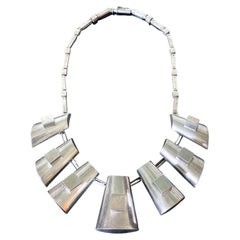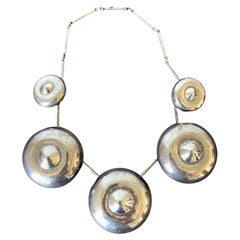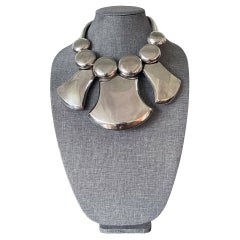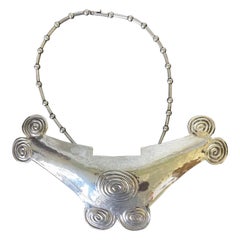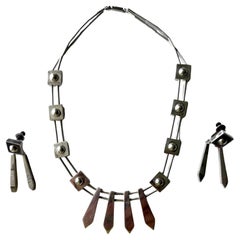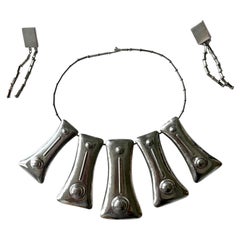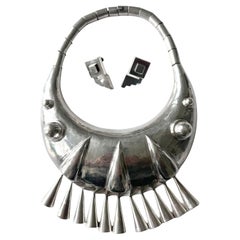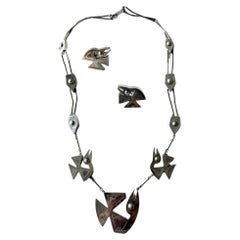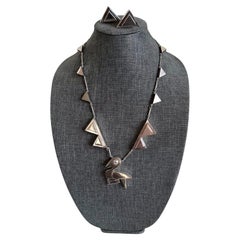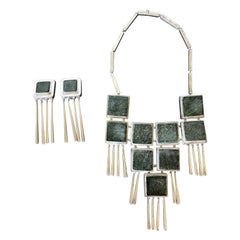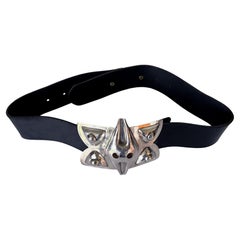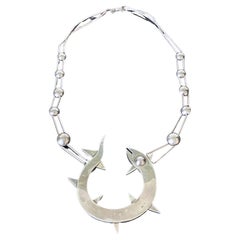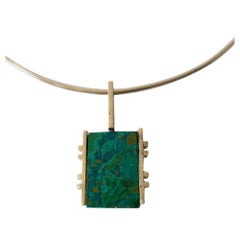Graziella Necklace
Vintage 1970s Peruvian Modern Collectible Jewelry
Sterling Silver
Vintage 1960s Peruvian Modern Collectible Jewelry
Sterling Silver
Vintage 1970s Peruvian Modern Collectible Jewelry
Sterling Silver
Vintage 1960s Peruvian Modern Collectible Jewelry
Sterling Silver
Vintage 1970s Peruvian Modern Collectible Jewelry
Sterling Silver
Vintage 1970s Peruvian Modern Collectible Jewelry
Sterling Silver
Vintage 1970s Peruvian Modern Collectible Jewelry
Sterling Silver
Vintage 1970s Peruvian Modern Collectible Jewelry
Sterling Silver
Late 20th Century Peruvian Modern Collectible Jewelry
Sterling Silver
Late 20th Century Peruvian Modern Collectible Jewelry
Sterling Silver
Vintage 1970s Peruvian Modern Collectible Jewelry
Stone, Sterling Silver
Vintage 1960s Peruvian Modern Collectible Jewelry
Sterling Silver
Vintage 1960s Peruvian Modern Sterling Silver
Sterling Silver
Vintage 1960s Peruvian Modern Collectible Jewelry
Sterling Silver
Vintage 1960s Peruvian Modern Sterling Silver
Sterling Silver
Recent Sales
Vintage 1970s Peruvian Modern Collectible Jewelry
Sterling Silver
Vintage 1960s Peruvian Modernist Pendant Necklaces
Malachite, Sterling Silver
Vintage 1970s Peruvian Modern Collectible Jewelry
Sterling Silver
People Also Browsed
Vintage 1930s Italian Art Deco Beds and Bed Frames
Brass
Mid-20th Century Japanese Japonisme Textiles
Silk
20th Century Japanese Meiji Textiles
Brocade, Silk
Vintage 1960s Unknown Collectible Jewelry
Vintage 1960s Swedish Scandinavian Modern Collectible Jewelry
Sterling Silver
Graziella Necklace For Sale on 1stDibs
How Much is a Graziella Necklace?
Graziella Laffi for sale on 1stDibs
Graziella Laffi, often referred to as the Spratling of Peru designed and made exceptional silver hollowware and exquisite jewelry pieces in both modern and pre-Columbian designs. She was born in Florence, Italy but lived and worked in Peru and drew much inspiration from the country’s rich architectural past. Her works span from the early 1950s to early 1970s.
A Close Look at Modern Furniture
The late 19th and early 20th centuries saw sweeping social change and major scientific advances — both of which contributed to a new aesthetic: modernism. Rejecting the rigidity of Victorian artistic conventions, modernists sought a new means of expression. References to the natural world and ornate classical embellishments gave way to the sleek simplicity of the Machine Age. Architect Philip Johnson characterized the hallmarks of modernism as “machine-like simplicity, smoothness or surface [and] avoidance of ornament.”
Early practitioners of modernist design include the De Stijl (“The Style”) group, founded in the Netherlands in 1917, and the Bauhaus School, founded two years later in Germany.
Followers of both groups produced sleek, spare designs — many of which became icons of daily life in the 20th century. The modernists rejected both natural and historical references and relied primarily on industrial materials such as metal, glass, plywood, and, later, plastics. While Bauhaus principals Marcel Breuer and Ludwig Mies van der Rohe created furniture from mass-produced, chrome-plated steel, American visionaries like Charles and Ray Eames worked in materials as novel as molded plywood and fiberglass. Today, Breuer’s Wassily chair, Mies van der Rohe’s Barcelona chair — crafted with his romantic partner, designer Lilly Reich — and the Eames lounge chair are emblems of progressive design and vintage originals are prized cornerstones of collections.
It’s difficult to overstate the influence that modernism continues to wield over designers and architects — and equally difficult to overstate how revolutionary it was when it first appeared a century ago. But because modernist furniture designs are so simple, they can blend in seamlessly with just about any type of décor. Don’t overlook them.
